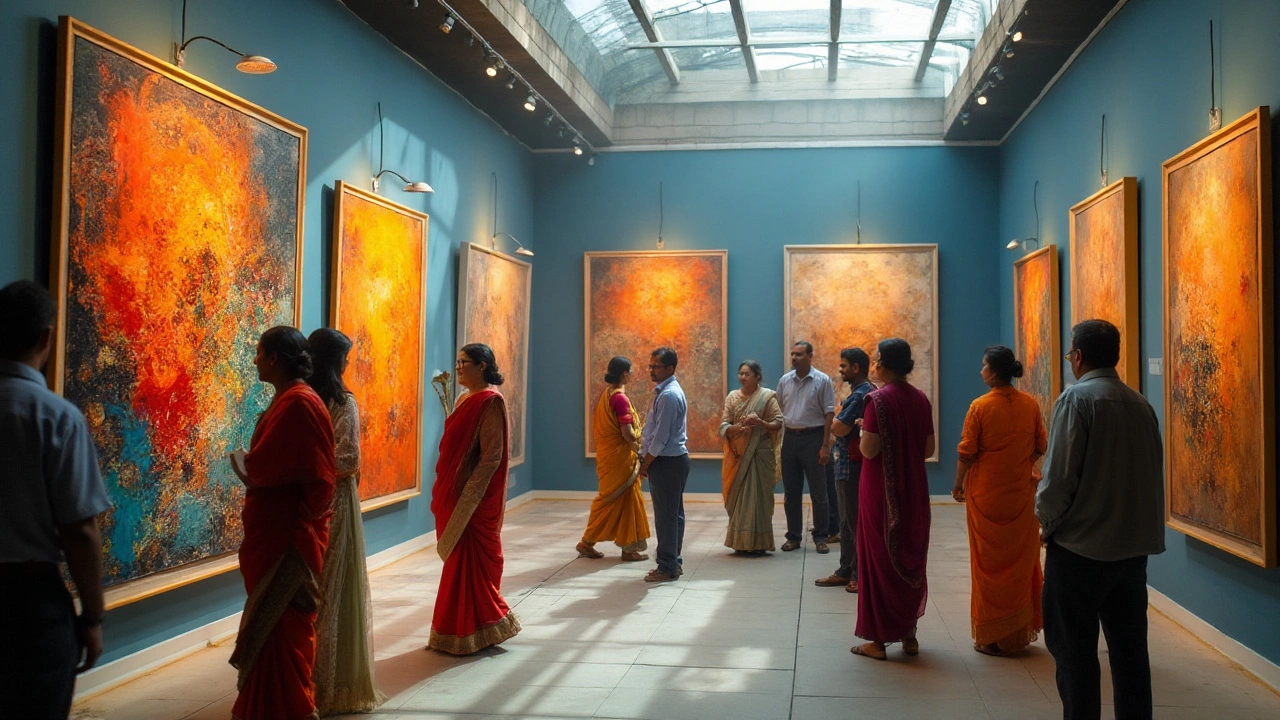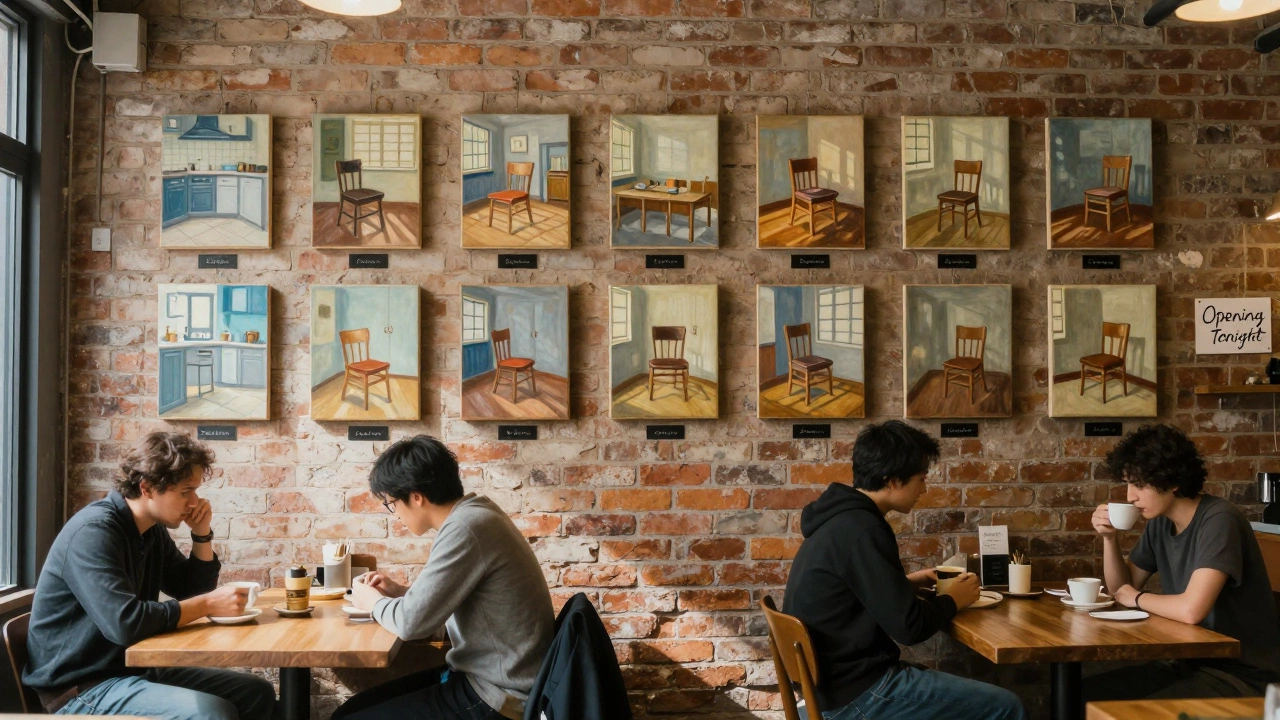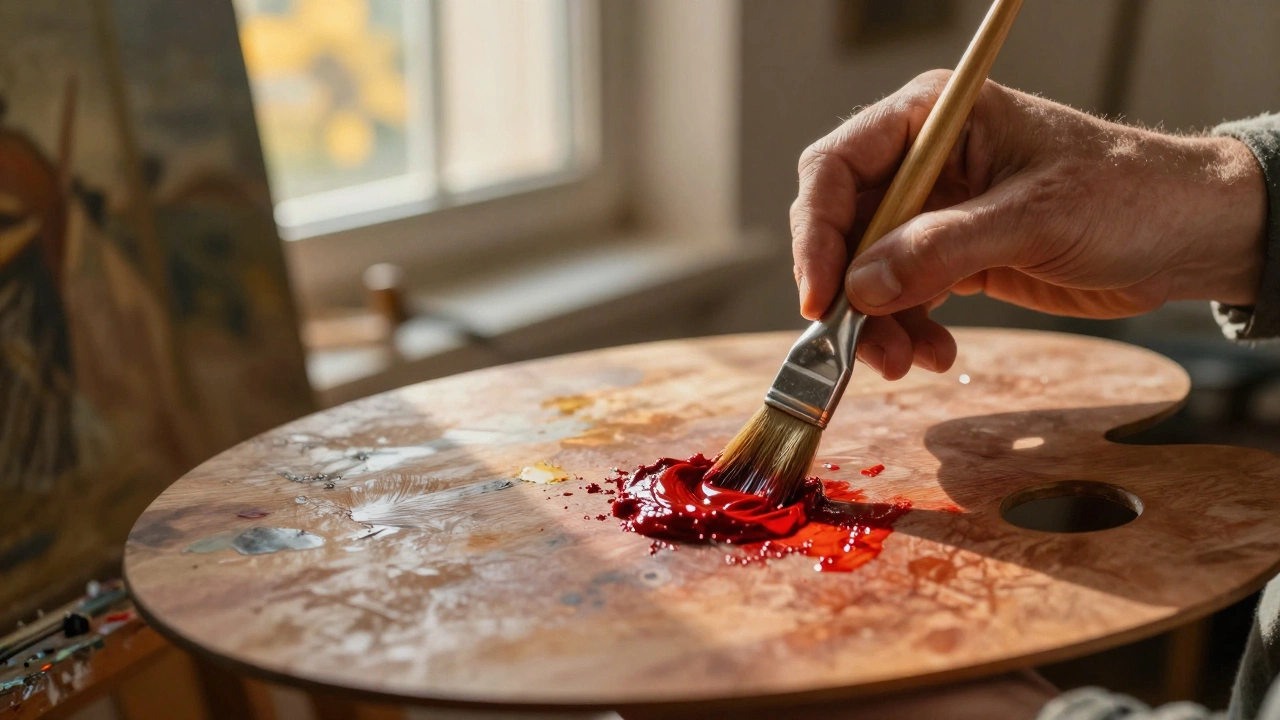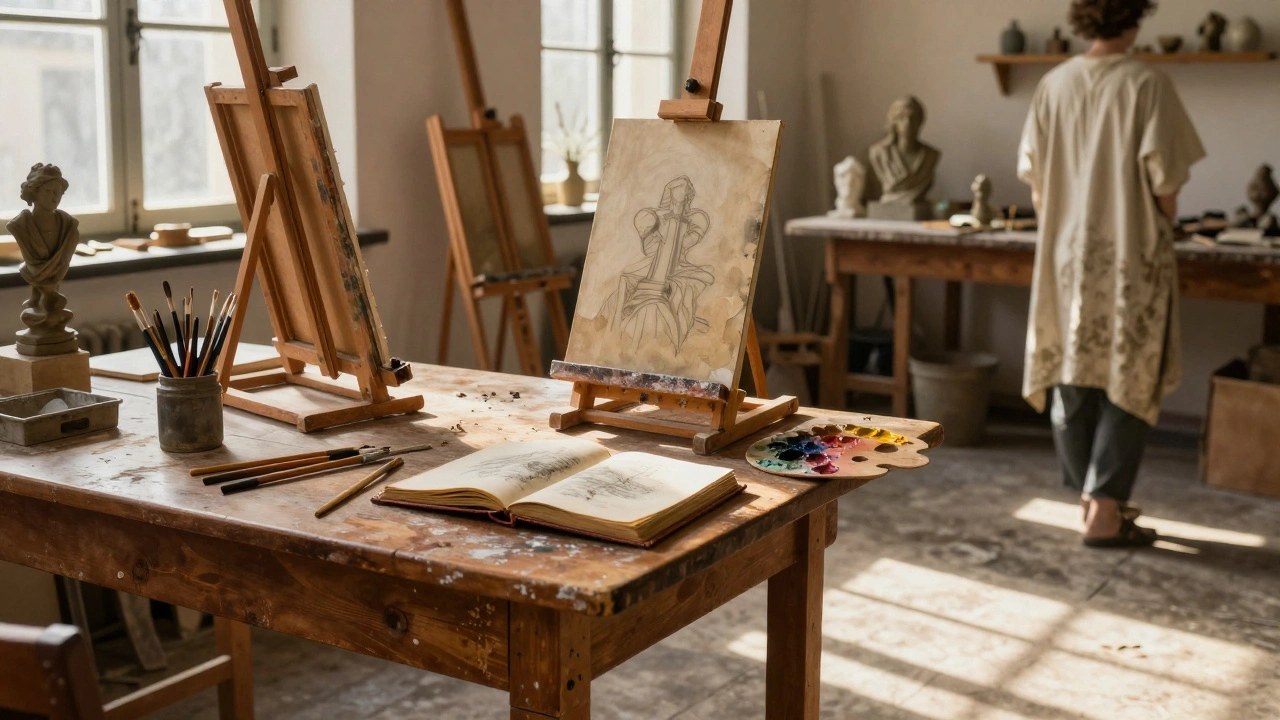Abstract art's dynamic allure has intrigued art enthusiasts and puzzled curious minds for over a century. Spontaneous, bold, and often challenging to interpret, it thrives on its ability to provoke thought and evoke emotion. Although many associate it with complete freedom, an unseen structure and essence often guide its creation.
As we explore this fascinating realm, the roots of abstract art reveal the shift in perspective that allowed artists to break away from the concrete world. While its unbounded form is celebrated, understanding its basic principles can enhance both creation and appreciation. This exploration not just illuminates abstract art's journey but also inspires a deeper connection with its vibrant diversity.
- The Birth of Abstract Art
- Breaking Boundaries: Artistic Freedom
- Principles at Play in Abstract Art
- Tips for Appreciating Abstract Creations
The Birth of Abstract Art
The emergence of abstract art marked a revolutionary shift in the world of art, transforming the way people viewed creative expressions. It was amidst the seismic changes of the early 20th century that abstract art began to take form, fueled by a desire to move beyond literal representation. Artists were eager to explore the myriad possibilities that lay beyond the constraints of realism, diving deep into the world of colors, shapes, and emotions. Among the pioneers was Wassily Kandinsky, often credited with creating the first purely abstract work. Kandinsky's vision was influenced by philosophies that sought the spiritual in art, a departure from traditional aesthetics. The era was ripe with experimentation driven by rapid advancements in science and technology.
This period, often referred to as the Modern Art Movement, was characterized by a profound questioning of reality and representation. Movements like Cubism, spearheaded by Picasso and Braque, started chiseling away at conventional perspectives, making room for abstraction to flourish. The abstraction didn't just emerge in isolation—it was part of a broader cultural upheaval. As societies grappled with industrialization and world war tensions, artists expressed their inner turbulence and desires for freedom through art. An influential event was the famous Armory Show of 1913 in New York, which exposed American audiences to European abstract art. This critical moment catalyzed the notion that art should invoke a response rather than replicate worldly appearances.
"The artist must train not only his eye but also his soul," Kandinsky asserted, underscoring the intentionality and depth within what might appear to be chaotic art forms.
Through delving into historical details, one finds that abstract art’s journey is rich and multifaceted, reflecting the socio-political climate of its time. It tapped into deep reservoirs of emotion and psychological states, as seen in movements like Abstract Expressionism, which emerged post-World War II. Notable figures like Jackson Pollock and Mark Rothko embraced this style to convey the unspeakable. Pollock’s drip paintings, for instance, were symphonies of randomness and intent, challenging viewers to engage with art on an experiential level. As abstract art evolved, it paved the way for countless artists, blurring boundaries across cultures and continents. It captured the zeitgeist in vivid, non-representational terms, encouraging viewers to interact with art in more profound and personal ways.
The movement's timeline is a testament to the transformative power of art, illustrating how artists like Mondrian moved from figurative to abstract with his iconic Composition series. Each phase of abstract art rich with experimentation, holds insights into humanity's evolving perceptions. Whether emerging from the chaos of solo reflections in avant-garde studios or igniting collaborations and discussions at exhibitions, abstract art underscored art’s limitless potential. Artists began to write manifestos and share ideas internationally, creating networks that propelled abstract art into the forefront of global culture. By reflecting on the birth of abstract art, we gain a fuller appreciation for its scope and the profound energy that continues to lift it.
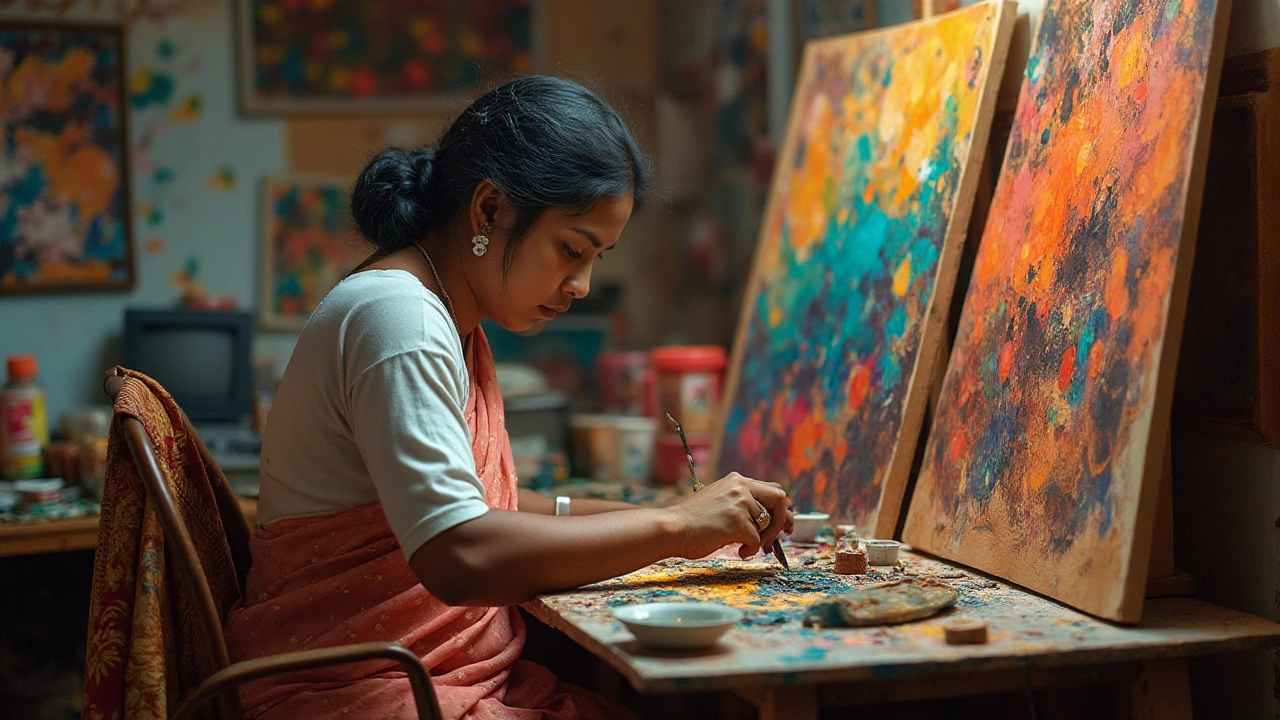
Breaking Boundaries: Artistic Freedom
Abstract art, in its essence, is a testament to artistic freedom. It embodies the artist's desire to transcend the traditional confines of representation and explore realms dictated by emotion, instinct, and thought. This movement, which began to gain traction in the early 20th century, was marked by artists eager to break free from the precise mimicking of reality. They ventured into the abstract, seeking to capture the spirit of their subjects rather than their physical forms. The pioneering figures such as Wassily Kandinsky and Piet Mondrian envisioned a new language of art, one where color, form, and line became independent from the literal world.
The liberation from the known visual constraints opened up endless possibilities. Artists like Kandinsky believed that art should reflect an inner world. His work, deeply influenced by spirituality and music, was less about depicting physical landscapes and more about evoking the intangible. He once noted, "Color is the keyboard, the eyes are the harmonies, the soul is the piano with many strings." This was more than a mere departure from the orthodox—it was a radical redefining of what art could convey.
"The more frightening the world becomes... the more art becomes abstract," said Paul Klee, acknowledging the complexities of abstraction.
With newfound freedom, abstract art shattered previous conventions, challenging both its creators and its observers. Yet, this break from tradition was not entirely devoid of structure or purpose. Artists harnessed their emotions and experiences, channeling them into their work in a manner that was both deliberate and thoughtful. They played with contrasts, repetition, and spatial relationships, all while honoring personal expression. Today, what one might initially interpret as chaotic randomness in abstract canvases often reveals a highly intentional narrative underneath the layers of paint and symbolism.
Within this unstructured domain, artists construct a unique language, shared only through acrylics, oils, and pastels. This extravagant form of self-expression is not merely about the absence of form, but the embrace of unrestrained imagination. The beauty of abstract art lies in its individual interpretation as much as it does in its creation. Each viewer becomes a participant in a dialogue, encouraged to project personal meanings onto the tapestry of colors and shapes. It is an open invitation to explore not what the artwork shows, but what it communicates to the depths of the soul itself.
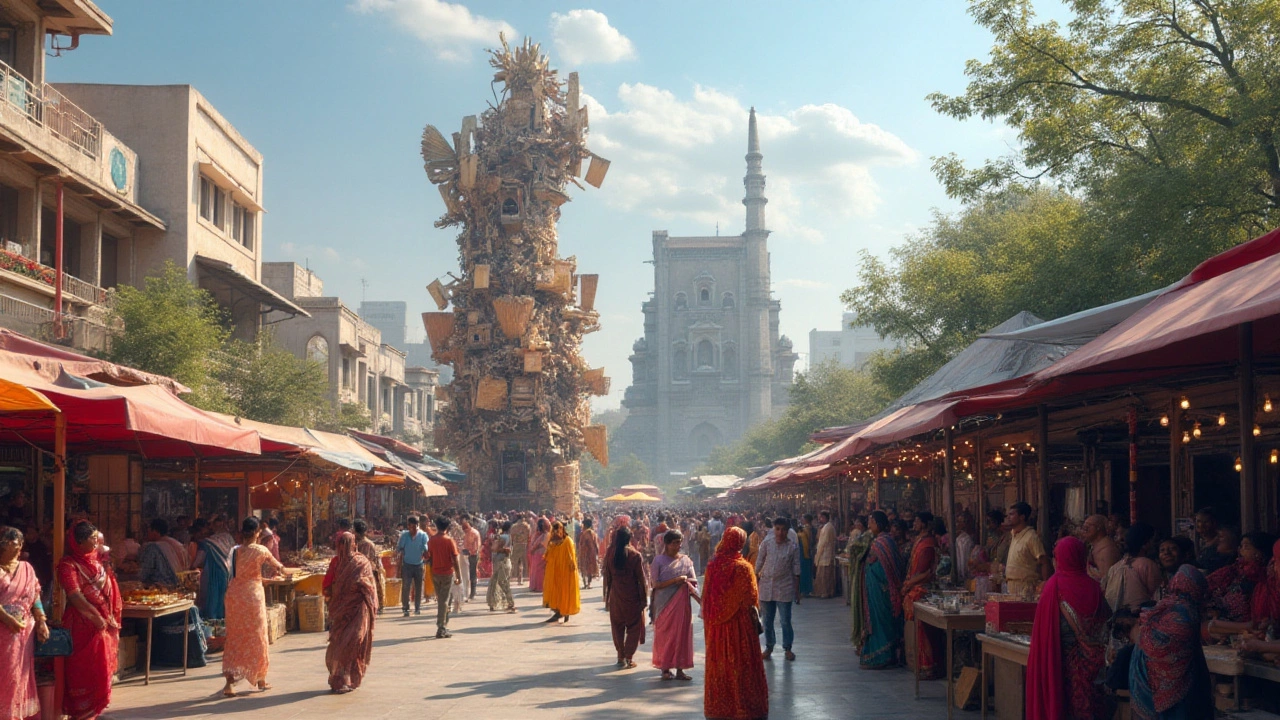
Principles at Play in Abstract Art
When diving into the fascinating world of abstract art, it might be tempting to see it as a purely chaotic or spontaneous endeavor. However, despite its apparent lack of structure, this art form often operates within a framework of principles, providing a balance between freedom and order that allows the artist to express emotions and ideas most effectively. One such principle is the use of color. In abstract works, color is not merely a way to depict reality but becomes an emotional language, telling stories and evoking feelings in ways that words might fail to capture. The understanding and deliberate juxtaposition of colors can add depth, energy, or calmness to a piece, guiding the viewer's emotional response.
Similarly, composition plays a significant role in abstract art, akin to its vital function in more traditional forms of art. Abstract using elements like shape, line, and space can create an intricate dance on the canvas, leading the viewer’s eye to wander through the artwork. This is not done haphazardly; often artists painstakingly study composition the same way classical artists do. The placement of lines or forms can determine whether an artwork feels off-balance or harmonious, chaotic or serene. A notable art historian, Herbert Read, once said,
“Every artist dips his brush into his own soul, and paints his own nature into his pictures.”This beautifully reflects how each abstract piece, while seemingly random, is meticulous and intentional in its design.
Texture also presents another layer of consideration within abstract art. It adds a tactile dimension that can enhance the visual journey. Artists might achieve texture through brush techniques, layering, or even mixing other materials. This tangible aspect of abstract work invites viewers to not only observe from a distance but also imagine the sensation of surfaces, raising an otherwise visual experience to something more immersive. Symbolism is another subtle, yet powerful principle. While abstract art tends to shy away from direct representation, it often embodies themes, emotions, or narratives. These might be conveyed through recurring shapes, colors, or lines, each carrying a weight of meaning that resonates differently with each observer. Such symbols imbue the artwork with an enigmatic layer that demands contemplation and interpretation.
When we talk about abstract art, motion is another intriguing principle contributing to its dynamism. Sometimes, the arrangement of lines or forms can suggest movement or change, engaging viewers in an experience that feels alive and in flux. Jackson Pollock's famous drip paintings are testament to this, capturing an energy that makes you feel as if you're witnessing a performance.
All these principles highlight the intricate balance in abstract art between accident and design, emotion and reason, chaos and control. Each artist embraces these elements differently, crafting a unique language that transcends the boundaries of conventional representation, inviting audiences into their inner world.
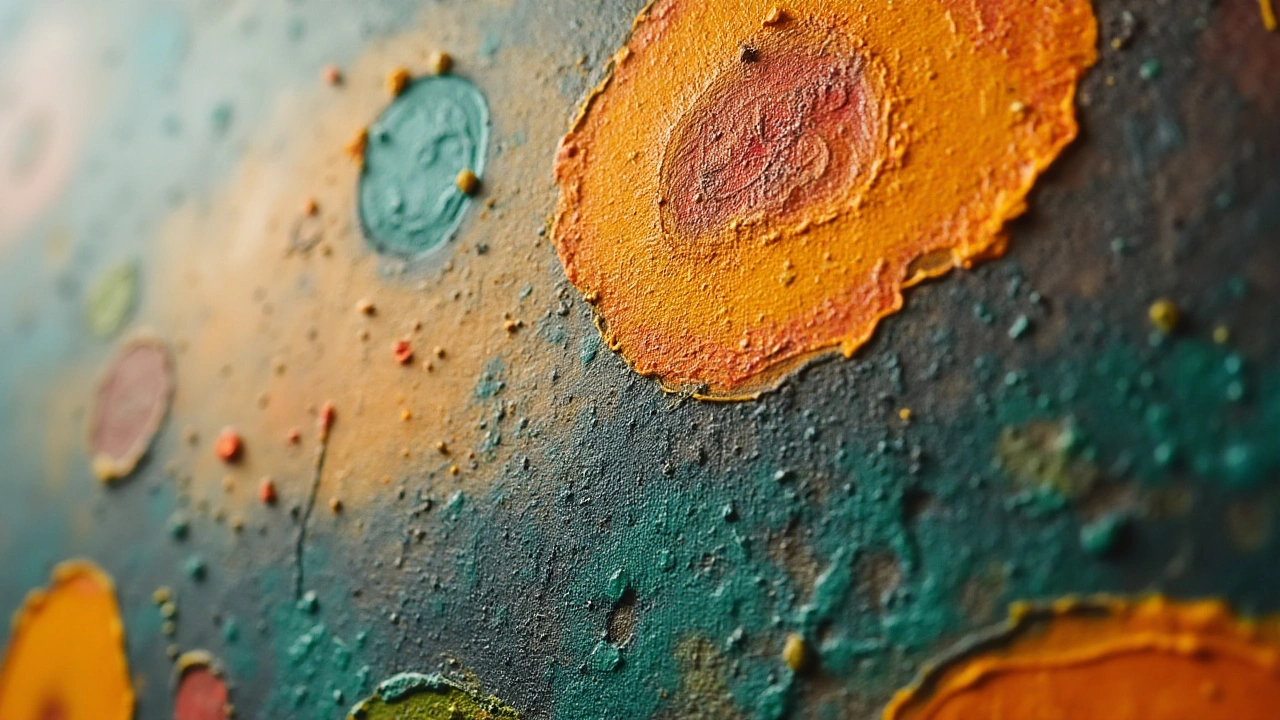
Tips for Appreciating Abstract Creations
Immersing oneself in the world of abstract art can open the door to a novel way of perceiving creativity. To truly appreciate abstract creations, it is essential to embrace an open mindset, one that allows for the freedom of interpretation and the personal connection with the artwork. By focusing on the emotions the piece evokes rather than a literal subject matter, one can begin to grasp the beauty within. Examine the colors, shapes, and textures, and pay attention to how they interact. The beauty of abstract art often lies in how it makes you feel, not just what it looks like.
Consider attending art exhibitions that feature abstract art. Such settings offer the opportunity to experience the ambiance and the environment the artwork was intended for. Engage with other visitors or curators if possible, as discussions can bring new insights and deepen understanding. Sharing perspectives might reveal subtleties you hadn't noticed before. Additionally, try to familiarize yourself with the history behind abstract art. Knowing the movement's evolution can enrich your knowledge and deepen your appreciation.
Reading artists' statements or interviews also provides a valuable window into their intentions and methods. It is worth noting that sometimes, a lack of apparent meaning or clear narrative is intentional, inviting viewers to project their thoughts and feelings onto the canvas. As Wassily Kandinsky, a pioneering abstract artist, once said,
“Color is a power which directly influences the soul.”With this in mind, attempt to absorb the artwork at a visceral level, allowing your senses to guide your interpretation.
Another helpful technique is to view the artwork from different angles or distances. Stand close to examine the finer details, then step back to understand the complete picture. This change in perspective can offer new insights. Engaging with art books, documentaries, or webpages can provide further depth into the abstraction techniques and materials used. Learn about specific artists whose work resonates with you and trace the nuances in their style. Trying to create abstract art yourself, even as a hobby, can also enhance your appreciation by offering practical insight into the artistic process.
The world of abstract art is filled with endless mysteries and delights. It encourages an intimate dialogue between the artwork and the viewer, transcending traditional boundaries. Let abstract art not only be seen, but felt—a fluid reflection of both the creator's spirit and the observer's soul. Discovering the uncharted territories it offers can be as rewarding as it is enlightening, inviting everyone to become part of its continuing conversation and evolution.
